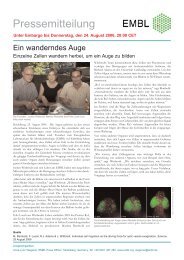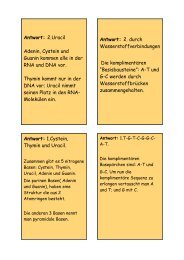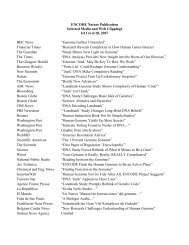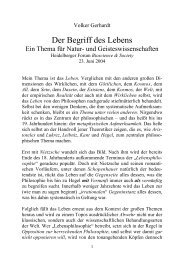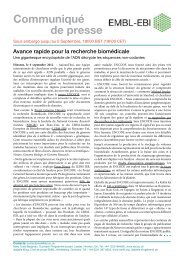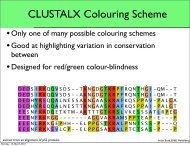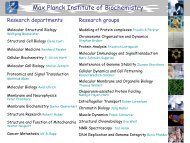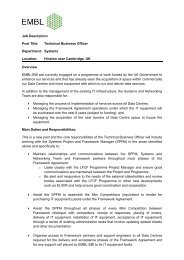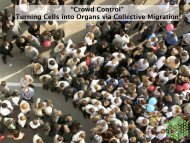EMBO Conference on Protein Synthesis and Translational Control
EMBO Conference on Protein Synthesis and Translational Control
EMBO Conference on Protein Synthesis and Translational Control
You also want an ePaper? Increase the reach of your titles
YUMPU automatically turns print PDFs into web optimized ePapers that Google loves.
JAMES MUNRO<br />
17<br />
Speaker Abstracts<br />
Single-molecule observati<strong>on</strong>s of rate-limiting c<strong>on</strong>formati<strong>on</strong>al events during<br />
ribosomal translocati<strong>on</strong><br />
Kevin Sanb<strong>on</strong>matsu 1, Chang-Shung Tung 1, Jamie Cate 2, James Munro 3, Scott Blanchard 3,<br />
Roger Altman 3, Michael Wasserman 3<br />
1 Los Alamos Nati<strong>on</strong>al Laboratory, United States of America<br />
2 UC Berkeley, United States of America<br />
3 Weill Cornell Medical College, United States of America<br />
The mechanism by which tRNA <strong>and</strong> mRNA translocate with respect to the ribosome is critical<br />
to gene expressi<strong>on</strong>. C<strong>on</strong>temporary models posit a multi-step, kinetically-driven translocati<strong>on</strong><br />
mechanism, rate-limited by c<strong>on</strong>formati<strong>on</strong>al processes in the ribosome <strong>and</strong> el<strong>on</strong>gati<strong>on</strong> factor G<br />
(EF-G). However, the precise order <strong>and</strong> timing <strong>and</strong> specific roles of distinct c<strong>on</strong>formati<strong>on</strong>al<br />
degrees of freedom in the ribosome complex remain open questi<strong>on</strong>s that have thus far been<br />
difficult or impossible to delineate. Here, using single-molecule fluorescence res<strong>on</strong>ance energy<br />
transfer (smFRET), we have investigated the order <strong>and</strong> timing of c<strong>on</strong>formati<strong>on</strong>al changes in the<br />
ribosome complex critical to tRNA-mRNA movements. By obtaining data from multiple<br />
structural perspectives we have directly m<strong>on</strong>itored the events leading up to formati<strong>on</strong> of the<br />
unlocked ribosome c<strong>on</strong>formati<strong>on</strong>, in which the P/E hybrid state is formed, the small ribosomal<br />
subunit is ratcheted, <strong>and</strong> the L1 stalk has adopted a closed c<strong>on</strong>formati<strong>on</strong>. These results reveal<br />
that c<strong>on</strong>formati<strong>on</strong>al processes <strong>on</strong> path to the unlocked state do not occur in a c<strong>on</strong>certed<br />
fashi<strong>on</strong>, but are instead loosely coupled. Under equilibrium c<strong>on</strong>diti<strong>on</strong>s, tRNAs exchange<br />
between hybrid <strong>and</strong> classical states rapidly, subunit ratcheting-unratcheting exchange occurs<br />
relatively slowly, <strong>and</strong> unlocked state formati<strong>on</strong> is rate-limited by L1 stalk closure. The loosely<br />
coupled nature of these events specifies that multiple structural pathways may be transited<br />
during translocati<strong>on</strong>. Direct observati<strong>on</strong>s of EF-G binding <strong>and</strong> translocati<strong>on</strong> events suggest that<br />
EF-G captures the unlocked state of the ribosome, inhibiting its return to the locked<br />
c<strong>on</strong>figurati<strong>on</strong> <strong>and</strong> promoting a fast dynamic mode of the L1 stalk. In this model, opening of the<br />
L1 stalk <strong>on</strong> the ratcheted/P/E hybrid state ribosome c<strong>on</strong>tributes directly to movement of P-site<br />
tRNA to the E site.





